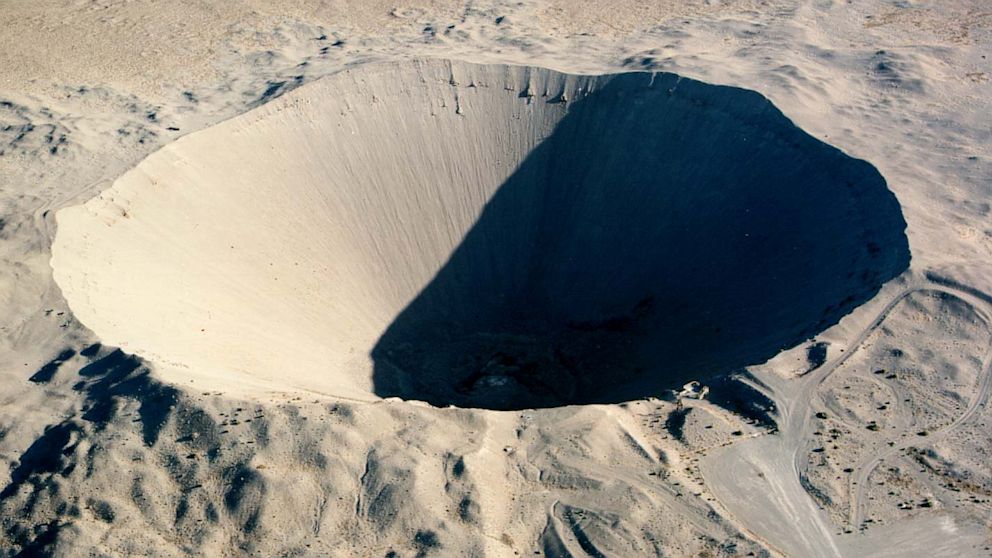Area 51, 25 Among Yucca Mountain's Nuclear Neighbors
Nuclear novelties neighbor Nevada's Yucca Mountain.

Aug. 15, 2013 -- intro:
A recent court decision has renewed the possibility that Nevada's Yucca Mountain may yet become the nation's repository for nuclear waste, of which the General Accounting Office estimates the U.S. has a rich abundance: some 75,000 metric tons and growing.
If it comes to rest here, it will feel right at home: Yucca's neighbors include properties rich in contamination and nuclear history, many of them within the Nevada Test Site, home to nuclear explosions and experiments since 1951. Between 1951 and 1992, according to the Test Site, 828 documented atmospheric or underground nuclear tests have occurred.
MORE NUCLEAR NEWS: RULING MAY FINALLY OPEN YUCCA MOUNTAIN TO WASTE REPOSITORY
Just an irradiated stone's throw from Yucca is Area 25, otherwise known as Jackass Flats, measuring 254 square miles. It once was home to Project Rover, tasked with developing a nuclear-powered rocket. Its Nuclear Rocket Development Station (now abandoned), consists of three giant facilities linked by a remote-control railroad--remote control so that its human operators could move radioactive fuel around at a safe distance.
Here are Area 25 and others of Yucca Mountain's novel nuclear neighbors.
quicklist:1title: Sedan Cratermedia: 19962481text:
Sedan crater, listed on the National Register of Historic Places, hugs the shore of Groom Lake (evaporated) within the Nevada Test Site--as does its neighbor to the northeast, mystery-shrouded Area 51.
Measuring 320 feet deep and 1,280 feet in diameter, it is large enough to be visible from space and was called into being instantly on July 6, 1962, the result of a 104-kiloton blast that expelled 12 million tons of earth.
It was the handiwork, indirectly, of Edward Teller, whose unique whimsy spawned Project Plowshare, the purpose of which was to find non-military uses for nuclear explosives, including earth-moving. In those politically incorrect days, Teller planned to use a multi-megaton hydrogen bomb to create a deep-water harbor on Alaska's coast. Other proposed Plowshare projects included a nuclear widening of the Panama Canal and constructing a new waterway through Nicaragua to be called the Pan-Atomic Canal.
A 1963 Plowshare project, "Carryall," would have used 22 nuclear explosions to cut a roadway through the Bristol Mountains in California's Mojave Desert to create Interstate 40.
The Sedan Crater explosion was the largest in Plowshare history and exposed more than 13 million Americans to radiation, according to All Around Nevada. It marked the end of the excavation program and any hopes of irradiating harbors, roadways and canals.
quicklist:2title: Civil Defensemedia: 19962523text:
During the Cold War, the Nevada Test Site was used to test what effect nuclear blasts might have on a wide variety of features of civilian life, including homes, offices, shelters, vehicles, landscaping and civilians. The blasts did not improve them.
Structures made of various materials, including simulated homes and office buildings, were built to then-prevailing standards of U.S. and European design. These would be placed at a variety of distances from ground zero. Mannequins were used in lieu of people.
High-speed cameras captured the effect of the blasts.
As in the photo here, some structures were destroyed outright, instantly, by the temperature and shock waves. Paint would be seen boiling off the buildings, which swayed helplessly, first pushed away from the blast, then sucked in the opposite direction by the cyclonic suction of the rising mushroom cloud.




